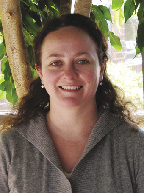Until recently, the economics of wind energy facilities have kept them out of reach of smaller consumers seeking to generate sources of renewable energy. However recent financial incentives through the federal American Recovery and Reinvestment Act (ARRA) and state programs such as the Connecticut Clean Energy Fund (CCEF) are making small wind a reality for more sectors of the population.
While there are few land-based sites in Connecticut suitable for large wind installations, the state offers many opportunities for small wind projects. The term "small wind" generally refers to projects that generate between 10 and 100 kilowatts (kW). There are several basic criteria to evaluate to determine if a particular site is suited for small wind. The economics of a small wind system are very sensitive to the average wind speed in the area, and to a lesser extent, the cost of purchasing electricity.
Wind resource maps exist that can help to determine available wind resources at specific sites in Connecticut. The New England Wind Resource maps are available online in PDF format and are also available in CD format with GIS compatible data. Commercial wind power projects using large turbines generally require a mean wind speed of at least 7 meters per second (m/s). Small wind projects can be viable at speeds as low as 5-6 m/s.
Wind speed increases with height above ground, and increasing speed increases wind power exponentially. Therefore relatively small investments in tower height can yield high rates of return in power production. For proper operation of a wind turbine, the bottom of the turbine's blades should be at least 25 to 30 ft. above the top of anything within 500 ft.
Small wind energy systems cost from $3,000 to $6,000 for every kilowatt of generating capacity. As a general rule of thumb, a turbine owner should be paying at least 10 cents/kWh for electricity to justify an investment in wind energy technology.
In addition to the federal Investment Tax Credits and funding opportunities associated with the ARRA, several programs are available at the state level in Connecticut. CCEF's On-Site Renewable Distributed Generation (DG) Program provides grants of up to $4 million to support the installation of systems, including wind, that generate electricity at commercial, industrial, and institutional buildings. In addition, grants of up to $50,000 per installation are available to support site-specific technical studies and financial feasibility studies.
Long term financing is also available through the Connecticut Department of Public Utility Control (DPUC) to retail and end-use customers for installation of customer-side distributed resources. This financing is available to customers of Connecticut Light & Power (CL&P) and United Illuminating (UI), and for projects that are also receiving financing from the CCEF.
In addition to opportunities that help to defray up-front costs, developers of small wind projects in Connecticut can recoup costs through net-metering provisions. Under net metering, a system owner receives retail credit for at least a portion of the electricity they generate. As part of its 1998 Electric Restructuring Public Act 98-28, the Connecticut legislature required all investor-owned utilities to provide net metering to residential customers who own electrical generators using renewable resources, including wind. Net metering provisions approved by the DPUC establish the maximum size limit for net-metered renewables at 100 kW. Although distribution companies are only required to offer net metering to residential customers, CL&P and UI also make it available to businesses. For example, a New Haven commercial printing business who is installing a 100-kilowatt turbine with a grant from the CCEF and federal stimulus funds will be able to sell excess electricity produced by the wind turbine back to UI on nights and weekends.
In general, any small wind project needs sufficient wind resources, an appropriately-zoned site, and financing to balance the economics. Projects may be easier to locate in industrial zones, which have less restrictive regulations related to height, noise, and aesthetics. In recognition of the state's potential for small wind, CCEF is developing three Small Wind Turbine Demonstration Projects to evaluate the usefulness and economics of small wind installations in the state. Data will be gathered over a one-year period evaluated prior to the launch of a Small Wind Rebate program in early 2010.
Briony Angus, AICP is an environmental planner at Tighe & Bond, headquartered in Westfield, Mass.
Tags:
Big opportunities for small wind a reality for more sectors of the population in Connecticut
June 17, 2009 - Connecticut









